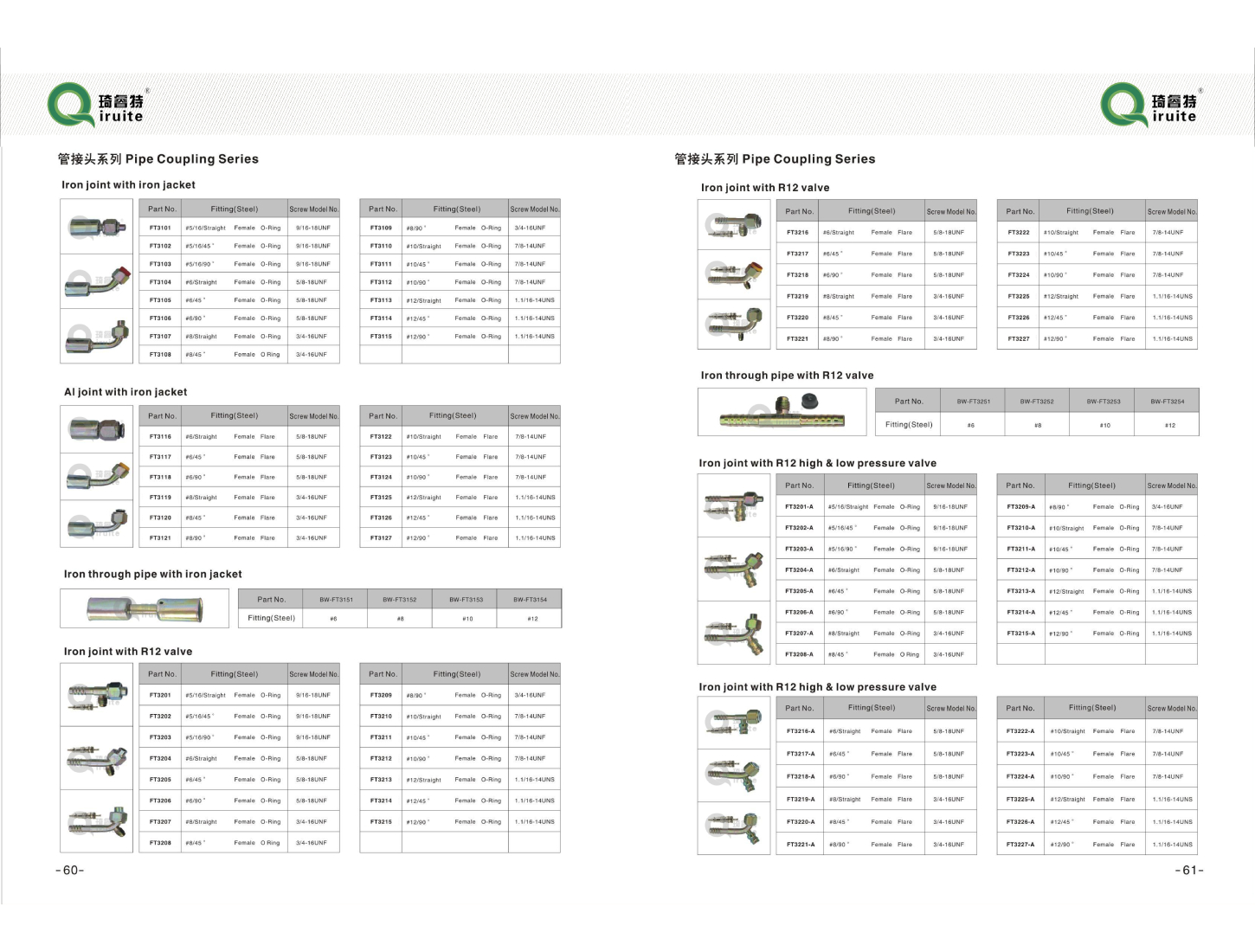Steps to Create Your Own Power Steering Hose Efficiently and Effectively
How to Make a Power Steering Hose
Power steering is a crucial component of modern automobiles, providing drivers with the ease of maneuvering their vehicles without excessive effort. A key part of the power steering system is the power steering hose, which connects the power steering pump to the steering gear, facilitating the transfer of hydraulic fluid essential for the system’s operation. If you are experiencing leaks or damage to your power steering hose, making a new one can be a rewarding DIY project. Below, we will guide you through the process of making a power steering hose.
Tools and Materials You’ll Need Before you start, gather the following tools and materials - Power steering hose (specific to your vehicle’s make and model) - Hose clamps - Hose cutter or knife - Wrenches (for fittings) - Measuring tape - Hydraulic fluid - Safety goggles and gloves - A clean workspace
Step 1 Assess the Old Hose Begin by inspecting the existing power steering hose. If it is leaking, cracked, or damaged, you will need to replace it. Carefully remove the hose from the power steering pump and the steering gear, noting any specific fittings or routing. It can be helpful to take pictures or make sketches to assist in reinstallation.
Step 2 Measure the Old Hose Once the old hose is removed, measure its length and diameter with your measuring tape. Be precise, as this ensures that the new hose will fit perfectly. Note any curves or bends that the old hose has, as you will need to replicate these angles in your new hose.
Step 3 Choose the Right Hose When selecting the new power steering hose, make sure it matches the specifications of the original. You can purchase a pre-cut power steering hose or buy bulk hydraulic hose and fittings. If you opt for bulk hose, ensure that it is rated for hydraulic fluid and can withstand the pressure exerted by the power steering system.
Step 4 Cut the Hose Using a hose cutter or a sharp knife, carefully cut the new hose to the length you measured earlier. Make sure the cut is straight to prevent any leaks at the fittings. If your hose has specific bends, you might need to heat it slightly (using warm water can work) to allow for easier bending without kinking.
how to make a power steering hose

Step 5 Install Hose Fittings After cutting the hose to size, attach the necessary fittings. Depending on your vehicle, the fittings may screw or clamp onto the hose. Ensure they are tightly secured but be careful not to over-torque them, as this could damage the hose.
Step 6 Attach the Hose to the Vehicle Next, attach one end of the new hose to the power steering pump and the other end to the steering gear. Refer back to the notes or photos you took during the removal of the old hose for proper routing and fitting connections. Once everything is in place, double-check that all connections are tight.
Step 7 Fill the Power Steering Fluid With the hose installed, it’s time to refill the power steering system with hydraulic fluid. Refer to your vehicle’s manual for the correct fluid type and amount. Pour the fluid through the reservoir until it reaches the appropriate level.
Step 8 Bleed the Power Steering System After filling, you will need to bleed the power steering system to remove any air pockets. Start your vehicle and turn the steering wheel from lock to lock several times. This process helps to circulate the fluid and expel any trapped air. Keep an eye on the fluid level, adding more if necessary.
Step 9 Test the System Finally, take your vehicle for a short test drive. Pay attention to the steering feel and check for any leaks around the new hose. If everything seems to be running smoothly, you have successfully made and installed your own power steering hose!
Conclusion Making a power steering hose involves careful planning and execution, but it can be accomplished with the right tools and a bit of patience. This DIY project not only saves money but also enhances your understanding of your vehicle’s hydraulic systems. Always remember, if you feel uncertain at any stage, consulting with a professional mechanic is always a good idea. Safe driving!
-
Ultimate Spiral Protection for Hoses & CablesNewsJun.26,2025
-
The Ultimate Quick-Connect Solutions for Every NeedNewsJun.26,2025
-
SAE J1401 Brake Hose: Reliable Choice for Safe BrakingNewsJun.26,2025
-
Reliable J2064 A/C Hoses for Real-World Cooling NeedsNewsJun.26,2025
-
Heavy-Duty Sewer Jetting Hoses Built to LastNewsJun.26,2025
-
Fix Power Steering Tube Leaks Fast – Durable & Affordable SolutionNewsJun.26,2025

